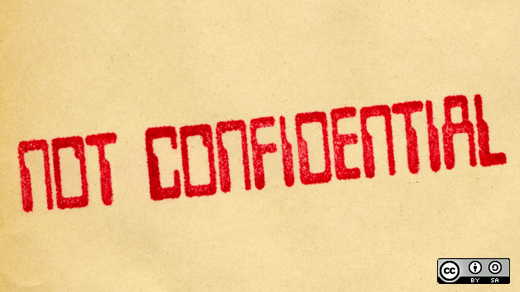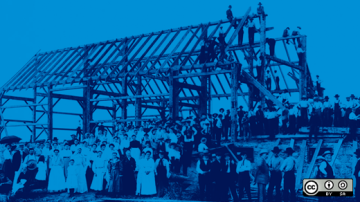Transparency is key in an open organization. This isn't a controversial statement. But is too much transparency in an organization possible?
Purdue University President Mitch Daniels thinks so. In a Washington Post op-ed, Daniels describes what he sees as transparency that goes "too far." For him, that means reaching a point at which the costs of acting transparently begin outweighing the benefits—in other words, when transparency hinders rather than helps a project. For example, Daniels argues that open records laws encourage people to avoid leaving a written trace of their discussions, which ultimately reduces the beneficial effects of transparency for the public. While I suspect Mr. Daniels may be overstating the case, he raises an important point: Transparency for transparency's sake is no virtue. Transparency is a way of acting, a particular manner in which we work to achieve some greater goal.
That way of acting is critical to maintaining the organizational agility that helps us stay ahead of challenges. But while we often speak of agility as it relates to actions, we rarely apply the term to beliefs.
In truly agile environments, where situations change unexpectedly and today's best practices become tomorrow's "legacy thinking," positions you once held may no longer be valid. And when those positions get recorded, they can be weaponized.
Weaponized transparency occurs when someone uses information about a person as an argument against them. It doesn't matter that something was knowingly made transparent; what matters here is how that something is used.
Need an example? Just watch what happens to any politician who takes a position contrary to one they held in the past. Weaponized transparency can deter openness, so it poses a real problem to open organizations.
So what's the solution to balancing transparency and agility in an open organization?
Not becoming less transparent. Instead, we should foster "compassionate transparency."
What is compassionate transparency? Simply put, compassionate transparency is the moderated level of transparency that allows members of an organization to bring forth ideas and engage in a healthy dialogue about them without fear of having past positions used to shame them or arguing against the ultimate decision used to undermine the end result. It means fostering a culture where attempts to weaponize transparency are quickly tamped down, not only by those higher in the hierarchy, but by peers as well. Other members of the organization step in to say "we don't do that here" when someone attempts to use transparency as a weapon.
The case for compassion
Compassionate transparency involves respecting individuals' agency as it pertains to their own story and information. Some things—like the contents of personnel files and records of employees' private discussions with their managers—are poor candidates for transparency in most cases. They can include details of private lives (illnesses, relationship trouble, and the like) that are no one's business. Or they may include feedback that, if weaponized, could cause problems for the person or the organization. We'd like to think that there's none of that in our organization, but any sufficiently large group of people will have to deal with base political maneuvering (even if we don't necessarily start hurling negative campaign ads).
Compassionate transparency can also mean allowing some degree of secrecy from the outside. An open organization may be very transparent internally, but keep some information "within the family." Daniels makes an argument for this in his article:
There is a reason the Constitutional Convention of 1787 was held privately and no official minutes were kept. Men who argued fiercely against certain provisions preserved their ability to accept second-best outcomes, and to go home and advocate ratification of the overall agreement.
Where the line gets drawn is not always as straightforward as it seems. Do the shareholders of a publicly traded company get the same level of access to information as employees? Do citizens get to see everything government employees do? In the abstract, these may be easy questions to answer, but the reality is often more messy than that. Considering the mess and striking a balance that leads to the best possible outcome is the core of compassionate transparency.







11 Comments